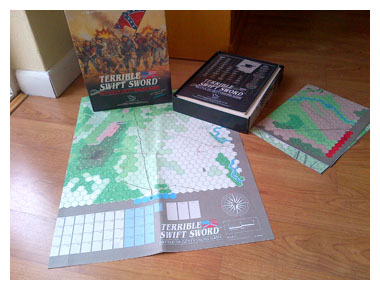
Older readers may think this blog title is the name of a 70’s disco-funk band. Sorry to disappoint, but it *is* a start at thinking about the importance of the steps that lead to the success of an important (for fans and studios) release – especially for a sequel or new episode where fans’ expectations can only be for something better that they previously consumed and raved about.
When a successful title has a number after it – either to indicate a calendar year or sequence number – that breeds an expectation of a followup. Sometimes these hopes are shattered by unforeseen circumstances, such as when the EA Madden franchise got exclusive NFL rights and neutered ESPN NFL 2K5 (arguably the better football title that year) from having any progeny. But, for the most part, there is financial and social pressure for the next edition to appear. Annual updates, such as those for sports titles, are enslaved to unforgiving deadlines to deliver the good in time for the new season. Many non-sports titles are less disciplined about forthcoming releases, and may have good reason such as the availability or home-grown creation of new technologies that will wow fans and justify spending 50-70 bucks on a triple A title.
The subject of this post centers around the upcoming FIFA 12 release, although I expect many qualities and experiences would be similar for other titles and genres such as the next Portal, Battlefield, etc.
Like a little seedling, conversations and speculations arise on the internet through forums and game critique websites. Some gameplay video may even get “leaked’ (wink-wink) to generate some pre-buzz. The first big moment happens at E3. People get to see in-person glimpses, reviewers and business partners get some hands-time, and interviews let the devs and projects leads tell their stories about what’s great this time around. FIFA 12 introduced a “new” technology with a catchy name to make a clear distinction about what’s going to be better in the game play. IMHO EA did a superb job providing videos and developer interviews explaining the Player Impact Engine – which provides more realistic reactions when players get tackled on, as well as Pro Player Intelligence, which guides AI players on the field to make decisions based on the attributes of the other players on their team, such as an AI player deciding whether to cross the ball to a tall teammate (e.g. Peter Crouch) in front of goal, versus passing the ball back to a skilled outside shooter. Precision Dribbling, Tactical Defending and a new Career Mode add enough firepower to warrant the new purchase. You can see what I’m talking about in this YouTube video. The final ploy to get your hard-earned dollars, and prime the revenue pump is the $20 credit you get when pre-ordering through Amazon.
Summarizing, EA seems to have hit on all cylinders by generating some internet buzz, having good demos at E3, putting lots of new-feature videos on the internet, personalizing their message by involving their dev leads, and providing a nice $20 reward for pre-ordering. The only thing I can criticize is the unimaginative and repetitive box art.


 in an honored place on my game shelf was a gift by one of my oldest friends. Together we spent countless hours in our youth playing the classic war games, from the venerable Tactics II to contemporary games like Ultimatum. The year 1986 was at the twilight of classical board war gaming and this copy of Terrible Swift Sword was the last boxed war game either of us purchased. That in itself gives it an emotional edge, being the last of its kind; but what made this even more special is that it was bought in Gettysburg. We were both Civil War buffs and his trip to Gettysburg while on leave with the U.S. army was one of those seminal moments for any student of the conflict. I knew he would be visiting the battlefield (by a written letter to me, yes handwritten; this was 1986 and email was unheard of), but when he came back with a copy of a game we had read about but never had seen a copy of (remember no internet either), well, I was ecstatic. At this point in our lives things were changing, I was in college, he had his military career, and the time we had to sit down to a lengthy board game was hard to come by. That scarcity of opportunity made the few times we were able to play even more special.
in an honored place on my game shelf was a gift by one of my oldest friends. Together we spent countless hours in our youth playing the classic war games, from the venerable Tactics II to contemporary games like Ultimatum. The year 1986 was at the twilight of classical board war gaming and this copy of Terrible Swift Sword was the last boxed war game either of us purchased. That in itself gives it an emotional edge, being the last of its kind; but what made this even more special is that it was bought in Gettysburg. We were both Civil War buffs and his trip to Gettysburg while on leave with the U.S. army was one of those seminal moments for any student of the conflict. I knew he would be visiting the battlefield (by a written letter to me, yes handwritten; this was 1986 and email was unheard of), but when he came back with a copy of a game we had read about but never had seen a copy of (remember no internet either), well, I was ecstatic. At this point in our lives things were changing, I was in college, he had his military career, and the time we had to sit down to a lengthy board game was hard to come by. That scarcity of opportunity made the few times we were able to play even more special.  Being students of the battle, we often discussed General
Being students of the battle, we often discussed General